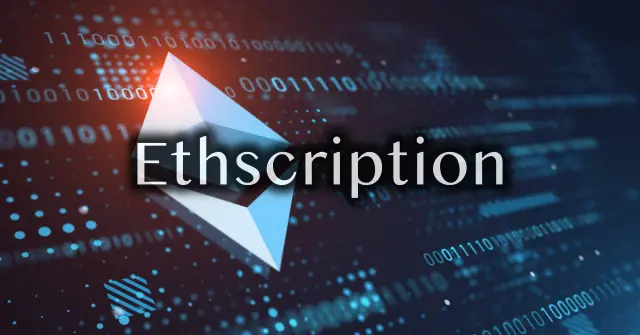What is ethscription? In short, it’s a new way to create, store, and trade unique digital assets directly on the Ethereum blockchain—without relying on traditional smart contracts or ERC-721 tokens. Inspired by the Bitcoin Ordinals movement, ethscription offers an innovative mechanism for embedding data directly into Ethereum transactions. Supporters say it democratizes digital ownership, while critics warn it could overload the network and raise regulatory questions.
This investigative analysis explores the origins, technology, and implications of ethscription, drawing insights from blockchain developers, market analysts, and emerging use cases.
The Birth of Ethscriptions: Context and Catalysts
Ethereum has long been the home of NFTs, DeFi, and countless decentralized applications. But in mid-2023, developers began experimenting with “data inscriptions,” a method that lets users write arbitrary data—like images, metadata, or text—into transaction calldata.
Bitcoin Ordinals, launched earlier that year, demonstrated a market appetite for on-chain art and collectibles. Ethereum’s answer arrived quickly: ethscription, a protocol that turns any valid Ethereum transaction into a permanent digital artifact.
Why the Name Matters
The term ethscription blends “Ethereum” with “inscription,” signaling its roots in Bitcoin Ordinals while emphasizing Ethereum’s more flexible smart-contract environment.
How Ethscriptions Work
At its core, an ethscription is a data blob stored within Ethereum’s transaction calldata. Unlike traditional NFTs that rely on smart contracts and external metadata (often hosted on IPFS or centralized servers), ethscriptions embed the entire asset on-chain.
Key Technical Features
- Data Encoding: Users encode images or files (commonly under ~96KB due to gas limits) into a hex string.
- Transaction Submission: This string is sent as a regular Ethereum transaction with minimal gas.
- Verification: The protocol scans the blockchain for valid inscriptions and assigns ownership to the transaction sender.
Because the asset itself resides in Ethereum’s immutable ledger, there is no dependency on external storage. However, this permanence also raises concerns about bloating the chain and increasing node requirements.
Comparing Ethscriptions to NFTs
| Feature | Ethscriptions | Traditional NFTs |
|---|---|---|
| Storage | Entire asset on-chain | Often off-chain (IPFS/servers) |
| Smart Contracts | Not required | Essential (ERC-721/1155) |
| Transfer Method | Simple ETH transaction | Contract interactions |
| Cost | Lower initial fees, but scales with size | Gas + contract costs |
Analyst Take: “Ethscriptions challenge the NFT status quo by eliminating the middle layer of smart contracts,” notes blockchain researcher Vitalik.org. “But this also limits programmability—royalties and complex mechanics are harder to implement.”
Market Growth and Early Projects
Despite being a niche innovation, ethscriptions have gained rapid traction. Within weeks of launch, thousands of inscriptions—ranging from pixel art to experimental code—flooded Ethereum.
Platforms such as Etherscan and specialized marketplaces began tracking these new digital collectibles. Early collections, similar to Bitcoin’s “rare sats,” quickly attracted speculators hunting for low-mint numbers and historically significant assets.
Benefits and Opportunities
1. True On-Chain Permanence
Because the asset is stored directly in Ethereum’s ledger, it can survive off-chain storage failures and centralized hosting issues.
2. Lower Barrier to Entry
Creating an ethscription requires only a simple transaction, not complex contract deployment, which lowers gas and technical costs.
3. Interoperability
Developers can build indexing tools and marketplaces without worrying about diverse smart-contract standards.
Risks and Challenges
Network Congestion
Embedding large amounts of data could inflate Ethereum’s state size, raising node requirements and transaction costs.
Regulatory Ambiguity
If ethscriptions host copyrighted or illicit material, questions of liability and enforcement could follow.
Limited Functionality
Without smart contracts, features like automatic royalties, dynamic metadata, or gaming mechanics are difficult to implement.
“The technology is elegant but potentially dangerous for network scalability,” warns an analyst at CoinDesk. “Ethereum’s core developers are watching closely.”
Investor Sentiment
Traders view ethscriptions as a speculative frontier akin to early NFTs. While some collections have appreciated rapidly, liquidity remains thin and prices volatile. Long-term value will likely depend on historical significance, rarity, and developer adoption rather than short-term hype.
Future Outlook
Many experts believe ethscriptions could evolve into a distinct asset class, bridging art, gaming, and decentralized identity. Layer-2 networks such as Arbitrum and Optimism may help scale this innovation by offering cheaper, faster transactions for larger inscriptions.
Ethereum’s upcoming protocol upgrades—focused on data availability and scalability—could also support more efficient on-chain storage, indirectly benefiting ethscriptions.
FAQs: What Is Ethscription?
Q1: What is ethscription in simple terms?
An ethscription is a piece of data—like an image or text—permanently embedded in the Ethereum blockchain via transaction calldata, creating a unique digital collectible.
Q2: How does an ethscription differ from an NFT?
Unlike NFTs that depend on smart contracts and off-chain storage, ethscriptions store the entire asset directly on-chain and require only a standard Ethereum transaction.
Q3: Are ethscriptions safe to invest in?
They inherit Ethereum’s security, but market volatility and speculative hype mean financial risk remains high.
Q4: What is the future of ethscription technology?
Developers are exploring Layer-2 scaling and new indexing tools, but long-term adoption depends on network capacity and regulatory clarity.
Conclusion: The Road Ahead for Ethscriptions
What is ethscription telling us about the future of blockchain? At minimum, it reflects a growing appetite for fully on-chain digital artifacts—beyond the limitations of traditional NFTs.
If Ethereum continues to scale and developers innovate around indexing and marketplaces, ethscriptions could become a permanent fixture of the crypto landscape. Yet the experiment is still young. Investors and creators alike must weigh the promise of immutable art against the technical and regulatory challenges of putting everything forever on-chain.

